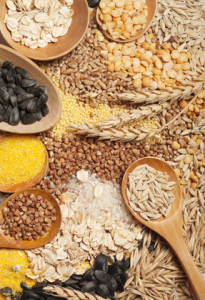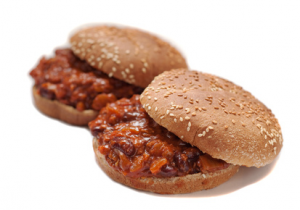
We are often told to eat whole grains, but do you really know why? Some of the benefits of eating whole grains that have been found in repeated studies and recent studies are:
- Stroke risk reduced by 30-36%
- Type 2 diabetes risk reduced by 21-30%
- Heart disease risk reduced by 25-28%
- Better weight maintenance
- Reduced risk of asthma
- Healthier carotid arteries
- Reduction of inflammatory disease risk
- Lower risk of colorectal cancer
- Healthier blood pressure levels
- Less gum disease and tooth loss
- Boosts your immune system
Whole grains are filled with dietary fiber which most people don’t get enough of. They are also full of Vitamin B, folate, iron, magnesium, selenium and other essential vitamins and nutrients. If you have any of the problems listed above or need improvement in, it is definitely worth adding whole grains to what you eat. Some of the different whole grains you can choose from are Amaranth, Barley, Farro, Kamut, Buckwheat, Millet, Oats, Bulgur, Corn, Quinoa, Rice (black, brown, red, wild), Wheat, Rye, Sorghum, Spelt, and whole wheat pasta and breads.
The fiber in whole grains breaks down more slowly to keep your digestive system working, which helps reduce cramps, gas, and that uncomfortable bloated feeling that makes you feel sluggish and tired. However, if you’re not used to eating whole grains, don’t suddenly inundate your system with to much at once because that can actually cause more bloating. Gradually add these various grains to your diet along with plenty of water until you body is able to tolerate your fiber increase. You can mix brown or black rice in with the white rice you eat. Add some barley or other type of grain to your soup. When baking, substitute half of the flour with whole wheat pastry flour. Add some uncooked whole oats to bread recipes and meatloaf or meatballs. Be creative in finding ways to add more whole grains to your meals for a healthier life.
I eat mostly whole grains, but felt I needed some more so I found a whole grain medley at my local grocery store. There are all kinds of grains in the isle with the rice and beans. This medley has brown rice, rye, bulgar, wheat, red quinoa, and wild rice. All you have to do is boil 1-1/2 cups of water and then add one cup of the medley and let it cook on low for about 30 minutes. I store this in the refrigerator and every morning I scoop some out, add vanilla almond milk and heat it up in the microwave. Then I add walnuts and fruit. I like blueberries or any kind of berries or bananas. If I happen to be out of fresh fruit, I add whatever dried fruit I have such as raisins, dried cranberries or apricots. This simple and quick breakfast has made a huge difference in how I feel for the rest of the day. Since I don’t usually have 30 minutes to cook this in the morning, I just make it while I am making dinner and then I have breakfast made for almost a week as well. The mixture of these grains gives it a nutty and slightly sweet flavor but if you like, you could always add a little honey if you want to sweeten it up more. This breakfast is more filling than cereal and I feel like it gives me more nutrients and minerals that just eating oatmeal. You can mix your own grains together if there are some you like more than others.
I hope you decide to add more whole grains to your diet. Your body will thank you.








